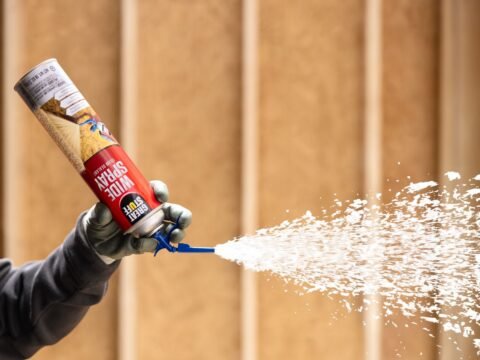
The Most Effective Type of Insulation for Your Attic Project
January 17, 2023
Do You Want a Theatre-Quality Sound Room?
January 26, 2023Online articles often tell you to invest in high-performing home insulation when lowering energy consumption. But insulation comes in various materials with multiple application methods. Only a few online articles describe the difference between the kinds of insulation available and specify which offers the most advantage in energy reduction.
Different Types of Insulation
Blanket
The blanket insulation type is by far the most popular kind of insulation. It is available in pre-cut batts or rolls composed of plastic fibers, fiberglass, natural fibers, and mineral wool. They are affordable, convenient to carry, and simple to put in. That is the reason blanket insulation is extremely popular.
Insulation rolls and batts are great for ceilings, floors, unfinished walls, and attics constructed with regular spacing between joists and studs.
The issue with blanket insulation is it could tear easily. It is also challenging to seal small corners, nooks, and crannies due to the dimensions of the batts and rolls.
Foam Board
Foam board insulation is an installation process that involves using boards of insulation. Commonly made of polyurethane Polystyrene or polyisocyanurate foam board insulation can be used in any house area. They have an excellent quality of insulation despite their thinness which is why they can get used on floors, ceilings, or walls that still need to be finished and even on roofs with low slopes that get not vented.
One of the advantages of foam board insulation is that it is the only insulation that blocks heat flow via structural components.
Loose-Fill
Blonde-in or loose-fill insulation utilizes special pneumatic equipment that fills the area with fluffy insulation, typically fiberglass, mineral wool, or cellulose. This kind of insulation is ideal for difficult-to-access and irregularly-shaped regions and spaces with obstructions. Attic floors are typical places to install loose-fill insulation.
However, the efficiency of blown-in insulation declines with time as the insulation gets softer and becomes less fluffy. It also stores moisture which could cause mold and lower its insulation capacity.
Reflective Insulation
Reflective insulation performs differently from other kinds of insulation. Instead of reducing the flow of heat within the structure of your house, it utilizes reflective materials to reflect energy away from your system. Film and foil are the most well-known materials used to create reflective insulation.
Beams, joists, rafters, and other areas prone to heat gain in a home get typically covered with films or foils. Although you may install this type of insulation on your own, getting professional assistance is highly recommended to guarantee its efficacy.
However, reflective insulation does not work well in cold climates.
Spray Foam
The spray foam insulation is sprayed on the surface, creating a solid barrier that covers the gaps in moisture and air. It is possible to choose between open-cell foam that expands to fill in any cavity and closed-cell foam that keeps bubble integrity intact for a secure seal.
Spray foam can get used as insulation in any area of your home, even those that are difficult to reach. But this type of insulation is the most expensive of the five methods mentioned.
When comparing the advantages and disadvantages of each type of insulation, spray foam insulation comes out as the most effective choice. Its benefits far outweigh the disadvantages. Its advantages far outweigh the disadvantages. The only drawback of spray foam insulation would be its price since it is known to be more costly than other kinds. However, this type of insulation will provide you with more significant savings on costs over the long term.
The Advantages of Spray Foam Installation
Spray polyurethane foam provides these advantages, boosting your return on investment for the cost of installation.
1: Higher R-Values
Spray foam insulation has the highest R-value, or insulating capacity, of all insulation methods. Closed-cell foam offers an R-value of 6.5 or 7 percent per inch. Because the foam keeps its shape, it’s more durable and has higher protection against heat.
Open-cell foam is more spongy in density and less dense than the closed-cell version, which is why it has a lower R-value. However, the value of 3.8 for every inch is comparable to that of common insulating materials such as fiberglass batts and loose cellulose.
It gets recommended that you hire an insulation contractor who sprays foam and installs it for you. This process requires special tools and techniques to ensure that the insulation functions just as it should.
2: The Air and Moisture Barrier
Spray foam made of polyurethane pushes itself into the tiniest crevices to seal all water and air leaks. Other types of insulation, like foam board and blankets, are less effective.
This barrier between moisture and air creates spray foam insulation that efficiently reduces energy use. When you air seal your residence, this insulation will prevent heat loss through drafts. Air sealing can help you save up to 15% of your cost of cooling and heating.
Along with being a solid impermeability barrier, it is unbeatable against moisture. The foam’s properties remain regardless of how wet it gets, in contrast to other insulation materials that must get replaced if they become wet.
3: Better Indoor Air Quality
One of the advantages of spray foam made from polyurethane is the better air quality inside. Since the foam can seal every crack and crevice that allow outside air to enter the dwelling, this minimizes the possibility of breezes carrying pollutants and allergens into your home. That is an enormous advantage for those who live with someone who suffers from respiratory allergies or other respiratory issues.
Spray foam insulation also shields your home from pests. Pests, insects, and rodents of all sizes cannot enter your home because the cracks in the ceilings, floors, and walls get blocked through the spray foam.
Additionally, spray foam reduces the growth of mildew and mold. Because the material is impervious to water, it blocks the build-up of moisture which is what decay requires to thrive.
4: Improved Structural Integrity
Due to its hardness and density, closed-cell foam insulation will strengthen the structural integrity of your house. Spray foam insulation sticks to surfaces, increasing the overall strength of your structure.
This way, insulation in your attic can make your ceiling and roof more resilient to storms and extreme weather.
Furthermore, certain types that get made of foam spray insulation protect against fire. Foam insulation comes in fire-resistant solutions. The insulation material reduces the spreading of fires and stops fires from gaining momentum. This fireproof property is beneficial in areas that are prone to many wildfires.
5: Soundproofing
Spray foam can be the most effective form of insulation for soundproofing your home. Outside sound typically gets inside through the cracks between your walls and doors. Foam spray blocks those gaps and absorbs the sound creating a powerful way to reduce noise.
Open-cell foam is sufficient to meet your soundproofing requirements if you only want to block low-frequency noises. For high-frequency and medium-frequency noise, choose a more dense closed-cell foam.
Once you’ve learned the benefits of spray foam insulation, now is the time to plan what you’ll do with it in your home. Your home must be adequately insulated from the roof to the foundation to ensure maximum efficiency in energy use.
The Places You Should Insulate within Your Home
Attic
In summer, insulation in your attic keeps the outside heat from getting into your home. If your attic hasn’t been properly insulation, heat may escape your home via crevices or cracks. Spray foam is the most effective attic insulation. The foam can be shaped in the shape of any space and is ideal for attics with unusual designs or beams that protrude from the joists.
Walls
The insulation on the exterior walls blocks moisture and air, protects your home from water damage, and strengthens the structural integrity of your home. Insulation plays a role in keeping your home’s temperature at an acceptable level.
On the other hand, the insulation of walls in the interior is less prevalent. However, it can provide many advantages. One of them is that insulating the walls inside before using drywall can prevent heat from entering adjacent rooms. That is particularly beneficial for houses with walls that are thin. Soundproofing insulation can also get applied to the interior walls.
Basement
Many homeowners need to take the time to insulate their basements properly. The basement is prone to gaps and cracks, which can cause air and water leaks. These leaks can cause water problems, mold growth, pests, and even more severe structural issues.
It is essential to use your basement for additional living space. The insulation in your basement will seal the cracks. Insulation keeps your basement warm and dry and makes your home more energy efficient.
With these benefits and uses, Spray foam insulation truly offers value for money. Even though it requires a substantial payment upfront, spray foam’s durability and energy efficiency will provide you with more significant cost savings over the long run.
Employ a reputable spray foam insulation contractor to ensure the service’s quality. Also, we do not recommend the installation of spray foam insulation yourself. It’s better to have an experienced contractor install it to increase the foam’s insulation capacity.
The effectiveness of spray foam insulation in the long and short terms is by far its most significant benefit. Contact 613 Spray Foam at (613) 319-8422 or mail us at info@613sprayfoam.ca for more information.




